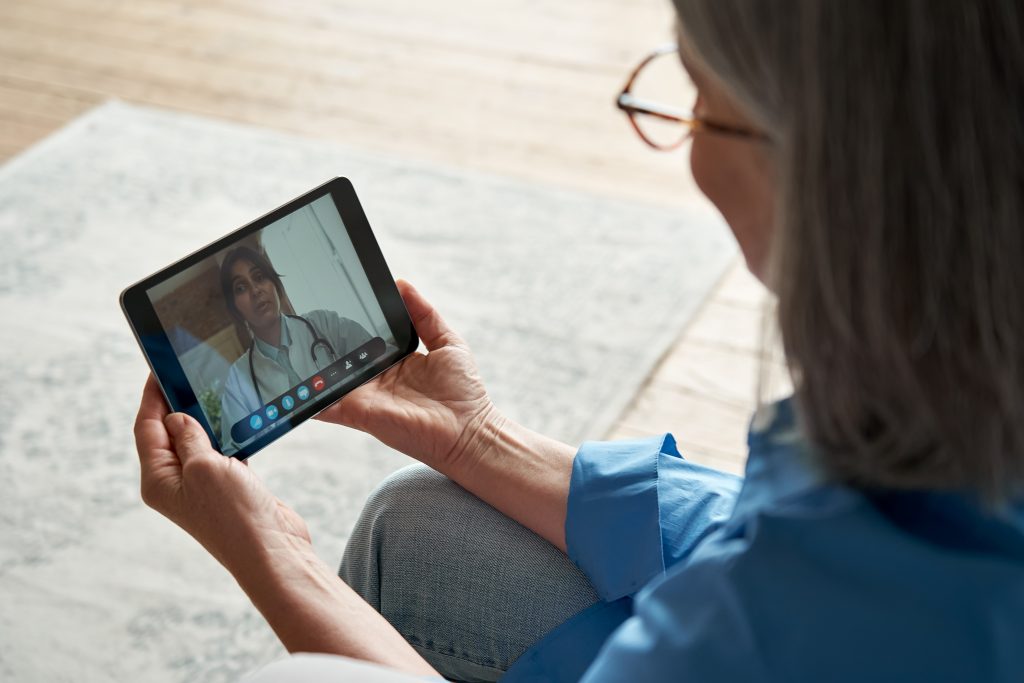As the dust settles from the end of the Public Health Emergency (PHE), vast changes in health policy continue to follow. This month’s round-up focuses on the effect the end of the PHE has had on health insurance, the role of telehealth in curbing mental health struggles, the cost of employer-sponsored telehealth versus in-person care, a congressional agency’s recommendation to lower telehealth payments, and a new $42 billion expansion of high-speed internet.
MedPAC Recommends Lowering Telehealth Payments to Pre-Pandemic Facility Rates
The Medicare Payment Advisory Commission (MedPAC) released a report to Congress with recommendations to return to pre-pandemic lower facility rate requirements for telehealth services.
MedPAC assessed the relationship between expanded telehealth coverage, health care quality, access, and cost. The analysis found the total cost of care per beneficiary increased in 2021 compared to 2019 in Hospital Service Areas (HSA) with both high and low telehealth use, with greater increase to those with high telehealth use.
“In summary, our findings suggest that during the pandemic, greater telehealth use was associated with little change in measured quality, slightly improved access to care for some beneficiaries, and slightly increased costs to the Medicare program,” the report states.
Read the full report from mHealth intelligence.
The PHE’s Impact on Health Insurance
Now that various benefits and expanded services offered by the PHE have come to an end, many patients will find changes to their health insurance coverage and out-of-pocket expenses.
Patients with private or group health insurance may continue to benefit from low- to no-cost telehealth visits with physicians, depending on coverage.
Read the full article by Forbes.
Employer-Sponsored Telehealth Costs 23% Less Than In-Person Care
New Research from the Perelman School of Medicine at the University of Pennsylvania shows the cost of providing pre-pandemic employer-sponsored telehealth was much lower than in-person care for Penn Medicine employees. According to this new study, over 95% of employers with more than 50 employees were providing direct-to-consumer telehealth in 2021. Telehealth also accounted for a majority of medical claims, even before the COVID-19 pandemic.
Despite significant growth, uncertainties still surround the reimbursement rate of telehealth, with its economic value still in question. Because of this, Penn Medicine researchers strived to better understand the impact of telehealth on the economy of the academic health system.
Read the full analysis on telehealth costs at mHealth Intelligence.
How Telehealth Can Help the Gen-Z Mental Health Crisis
Countless studies are now showing stressors such as social media, bullying, loneliness, and the pandemic are causing a widespread impact on mental health for high school and college students. According to a report from the CDC, an overwhelming amount of teens are experiencing hopelessness and suicidal thoughts.
With a shortage of mental health professionals in the United States, telemedicine has become a viable option to combat this crisis.
Read more on this and what leaders think in Healthcare IT News. And check out these initiatives in states, including Virginia, that are increasing access to mental health services.
Biden Announces $42B to Expand High-Speed Internet Access
Access to broadband is instrumental in ensuring both patients and providers have access to quality telehealth care.
President Biden announced new federal funding to the tune of $42 billion to expand high-speed internet access nationwide. This is now the largest-ever campaign to integrate access to the internet for an estimated 8.5 million families.
The government plans to roll this out to states over the next two years, with this ambitious effort set to be in place by 2030.
Virginia will submit a plan to increase broadband in the Commonwealth using $1.5B in grant funds from Biden’s federal budget.
Read the entire article by The Washington Post.

